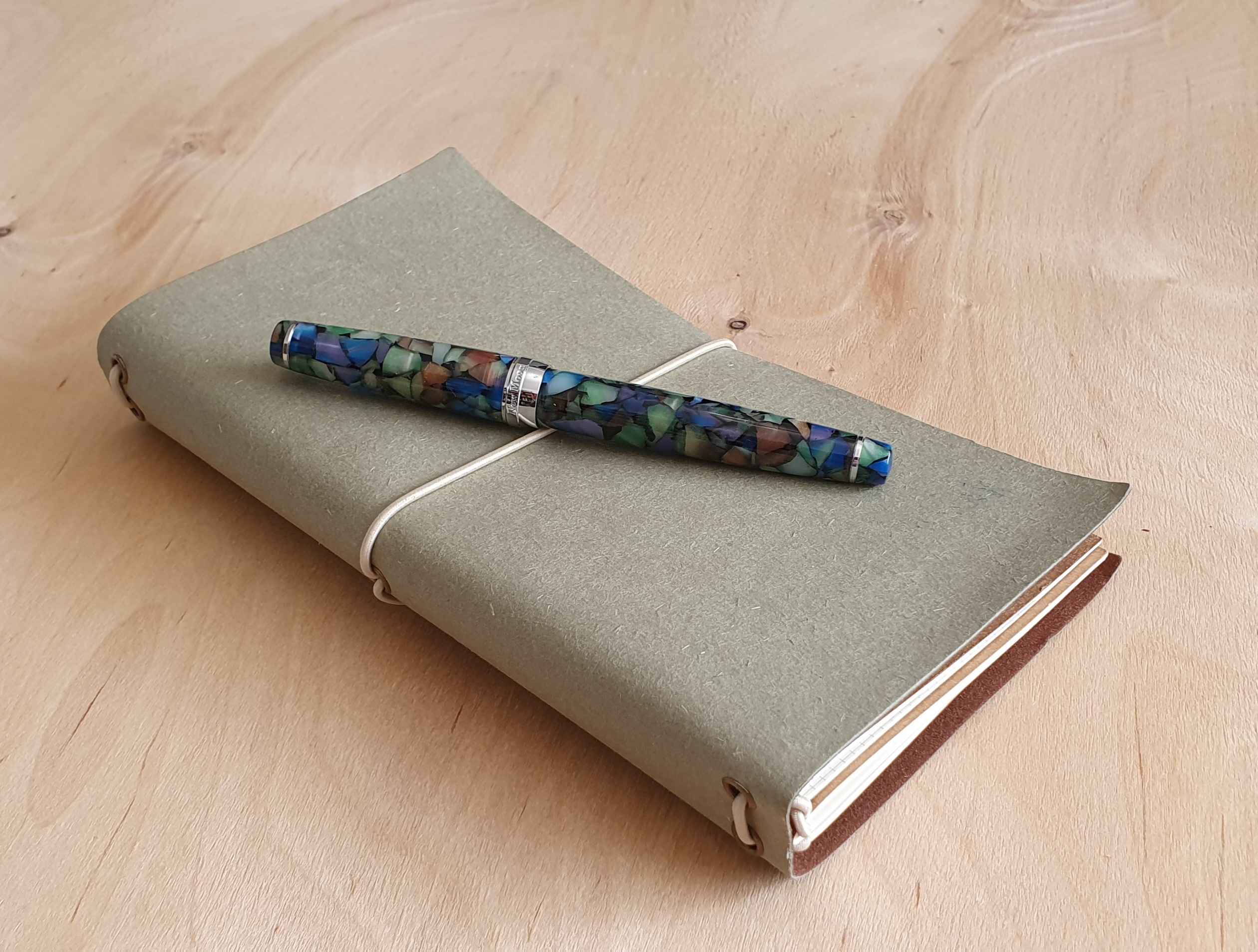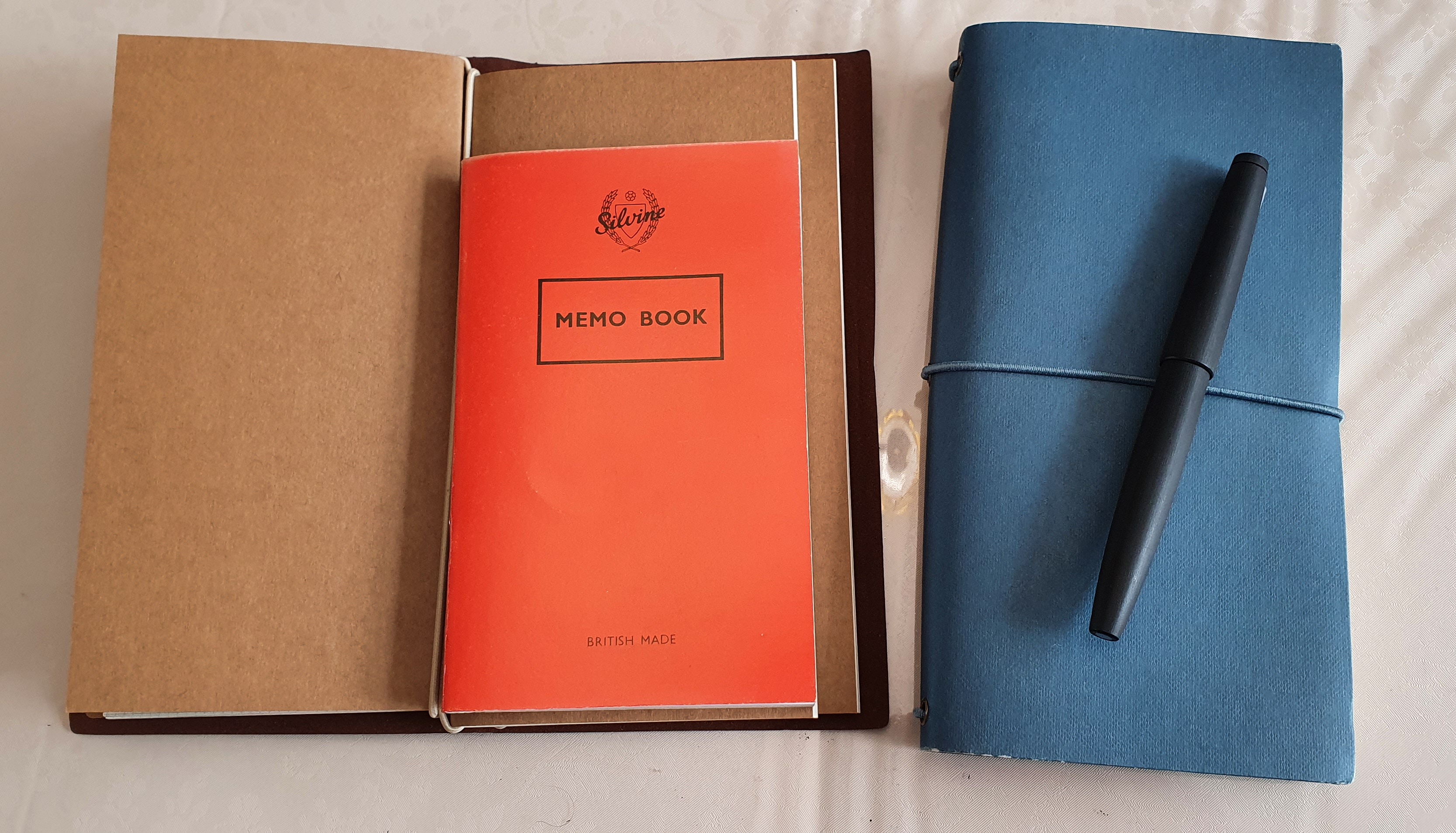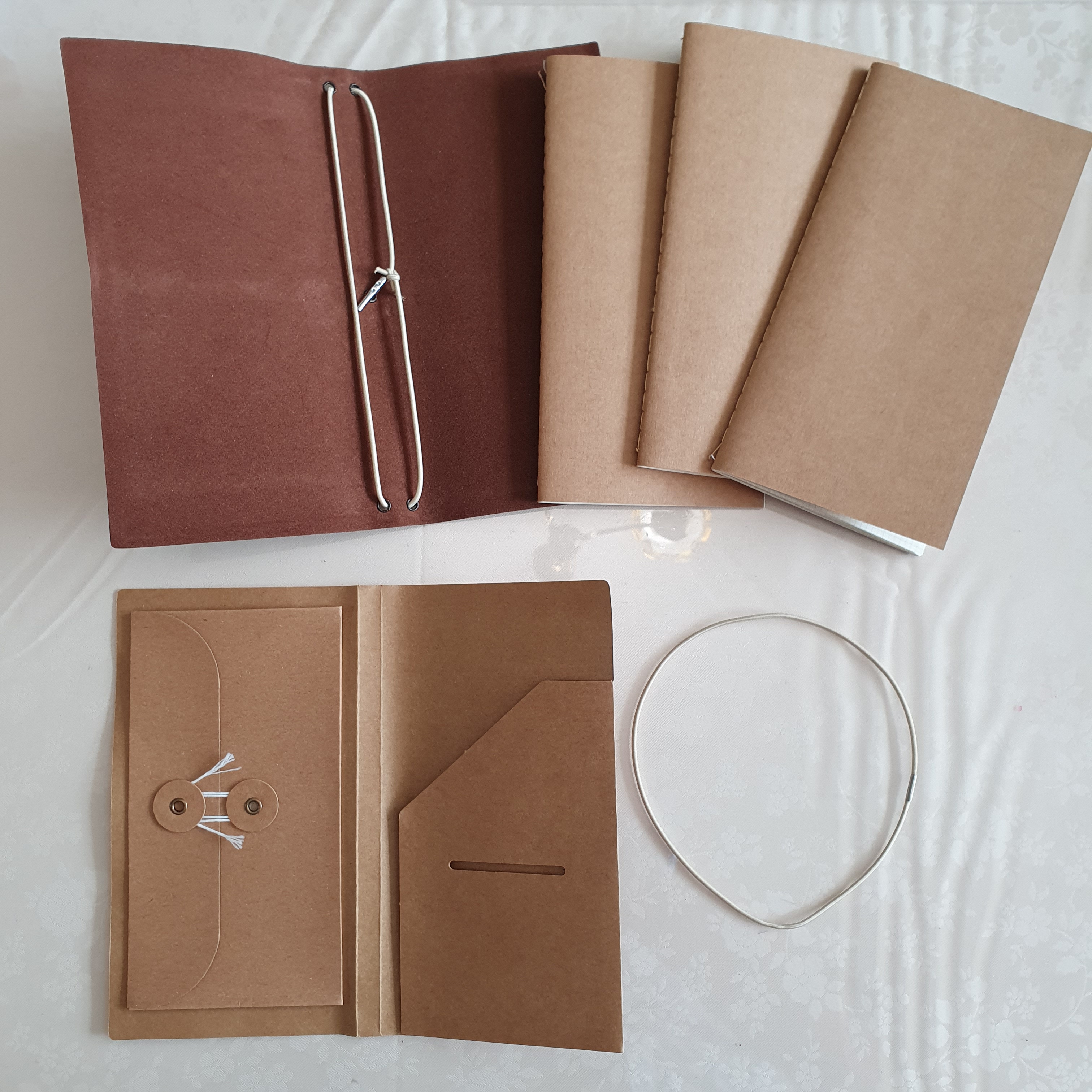On a recent visit to London’s Canary Wharf, I found a branch of Flying Tiger Copenhagen, and popped in for a browse.
Right near the entrance, I spotted an olive colour, traveller-style notebook cover with elasticated loop, containing three notebooks, each with different paper. It was simply labelled Notebook, or Notesbog in Danish. The cover was not leather, but felt like a soft, fibrous cardstock with a brown faux-suede backing. Inside this, a removable brown card (which slips in behind the notebooks, between the books and the outer cover) provides an expandable wallet with cotton fastening on one side and another little pouch, to keep tickets or receipts or such like on the other side. As the ticket pouch needs to be the right way up, this has to be at the back, whilst the expandable wallet will be at the front of your notebooks. However if you do not need these, or prefer not to feel the uneven lumps and bumps below the paper when writing, you can slide it out.

I was very taken with this, especially the olive colour. The notebooks looked tall and slim, rather taller than the red Silvine memo book that I usually carry when out and about, but the same page width. The paper in the first notebook was squared, the second book had lined pages and the third had dot grid. The paper felt reasonably thick and good quality. The notebooks were each stitched, rather than stapled and with plain brown card covers. Each book was held in place with an elasticated loop.

The cover includes two elasticated loops inside the spine. You could slide one notebook under each loop if you just wished to carry two. However there are three notebooks in total, the first two attached to each other by a separate elasticated loop and then slid under the first of the two loops attached to the cover.

Having picked up one to buy, I made my way toward the cash tills, following the one-way route around all the aisles so that you get to pass every item in the shop. I soon found another display of these notebooks, but this time the covers were available in blue-grey, (which I will call blue) or dark green. This threw me slightly, and to confuse matters further, these blue or green versions were fatter and heavier. On closer inspection, I noticed that whilst the covers were all of the same size, there were more pages in the blue and the green cover notebooks, than in the olive one that I had seen first. Yet they were the same price, still only £4.00. Was the olive one over-priced, or were the blue and the green ones underpriced? I decided to hedge my bets and buy one of each size.

Specifications:
Olive green version:
- 1 x outer cover, olive green with one elasticated loop closure and two loops in the spine
- 1 x cardboard insert, with expandable pouch and a slot for tickets;
- 1 x notebook with squared paper, 48 pages, squares are 2.7mm, or 10 squares = 2.7cm;
- 1 x notebook with lined paper, 48 pages, 20 rows per page, 8.2mm row height;
- 1 x notebook with dot-grid paper, 48 pages, 5mm squares;
- The notebook size is 19.5cm x 9.5cm. The paper is 80 gsm.
- Total 72 leaves, or 144 pages. Total weight: approximately 177 grams.
Blue version:
- 1 x outer cover, blue, with one elasticated loop closure and two loops in the spine
- 1 x cardboard insert, with expandable pouch and a slot for tickets;
- 1 x notebook with squared paper, 64 pages, squares are 2.7mm, or 10 squares = 2.7cm;
- 1 x notebook with lined paper, 64 pages, 20 rows per page, 8.2mm row height;
- 1 x notebook with dot-grid paper, 64 pages, 5mm squares;
- The notebook size is 19.5cm x 9.5cm. The paper is 80 gsm.
Total 96 leaves, or 192 pages. Total weight: approximately 258 grams.

Finally, the difference in weight of these two options is not entirely due to the extra number of pages: the cover of the blue version feels slightly thicker and stiffer than on the olive one. This led me to disassemble both sets to weigh the component parts individually. Even I felt a bit nerdy doing this. But sure enough, the olive cover weighed approximately 26.5 grams, whilst the blue cover weighed around 30.5 grams.

So in summary, you have a choice, one with a total of 144 pages, and one with 192 pages and a stiffer cover.
The paper is pleasant to use and is fountain pen friendly. The set will be great to chuck in my green canvas shoulder bag. It remains to be seen how each cover will fare over time, after being carried about. The elastic loop may in time bite into the covers – more likely with the thinner cover of the olive version. You get more for your money with the blue version, whilst the olive version is thinner and lighter to carry. Of course, you can mix and match the contents or replace them as you wish. But both seemed good value to me. Buying one of each in order to reap the average value seemed the right choice.














